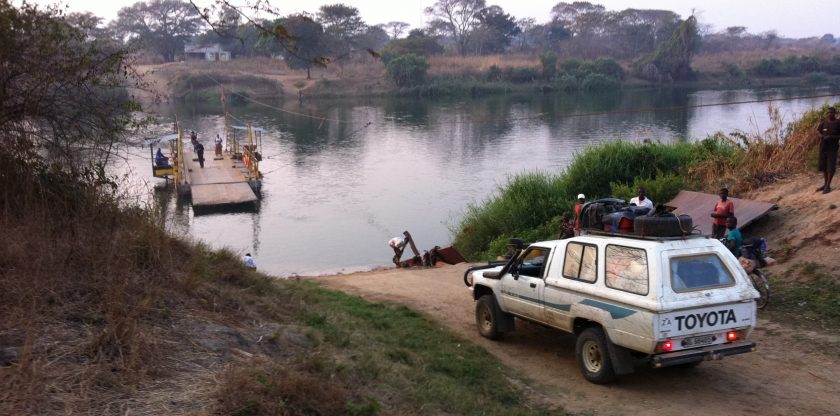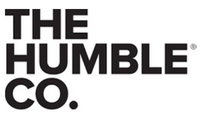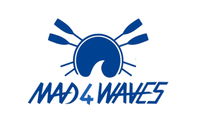
Kafue River Recce
Posted by Louise Cook | 14 Mar 2017
“We can bring the boats in at this point” said Tim confidently pointing at a squiggle on Google Maps. Everyone in the room nodded.
The last time I was in Kafue Game Park, in the north, an area so remote and so hardly visited the tracks we used were also used by animals and sometimes to disastrous effect. The hippos left enormous holes in the “black cotton soil”, a local sticky like soil which when wet acted like clay rendering wheels useless as they spun in one spot caked in mud and in the dry season baked to a solid rock like consistency which prevented any style of normal driving. I had experienced emergency driving along these tracks numerous times, always highly uncomfortable and generally wrecking the vehicle’s suspension. In one incident it was an immature lion who had taken a dislike to a tourist in our group, we were never sure if was the coughing, the clicking of the camera on rapid action or the colour of her hat but after a mock charge he decided to come at us at full pelt and move we did. In an open topped land cruiser feeling very vulnerable we clung on as the vehicle tried to speed across the black cotton soil veering in and out of the holes, crashing from side to side. This young male was aggressive and angry, unlike the usual prides on the Busanga Plains, he was a stranger and we knew he must have crossed from the Game Management Area, the area bordering the park where hunting was allowed. Poaching was rife there too as it was in the park….there were no fences and very few patrols so it was everyone for themselves and this lion was no exception.
So, sitting in the beautiful and elegant Leander club Library, I thought of taking their prize athletes and others on an expedition which involved an epic river and notorious additional challenges.
“I think its essential we do a reconnaissance Tim” raised eyebrows from around the room.
A few weeks later we are in a 4X4 on a dirt track hurtling our way through the bush taking on an 1400km road trip in 4 days to check the essential points on the river which Tim had identified as being tricky. The Kafue River flows approximately 250kms through the Kafue Game Park; one of the biggest game sanctuaries in the world at 22,400 sq km it is roughly the size of Wales. There are no roads along side the river and each check point has to be reached at separately. It was over 30 degrees, very dusty and the tetsi flies were at their most lively. Our air conditioning was limited so we alternated between being cooked alive or being eaten alive by horse flies on steroids. Before we had done our first 100km we had a full blown tyre blow out. Once you have experienced one of these you never forget it as the car does the most violent donkey kick followed by a crazy careering down the road to shudders of dust coming from every cavity in the car. Robbie handled the car well and brought the shaking and traumatised vehicle to a safe spot off the road. This cost us dearly in terms of time. Rocks were gathered from the bush to reinforce the jack and once on the road with the spare tyre it was essential we replaced the shredded one at the one main town we were going to be passing through for the next 1000+ kms. It was easier said than done as Zambians huddled in groups under trees debated with us the merits between new versus second hand and tyres with an inner tube versus without, what was clear there would be no chance of replacing the tyre at a regular style garage.
We were watching the sun closely, we knew at the point the sun softens and the shadows lengthen we had hours before sunset and with that rapid darkness. Our first point was Lubungu pontoon, which may serve as a access point with rowers coming in and out. It was still hot and the flies still dined on us but the first sight of the river was awesome The Kafue River is stunning, its so blue, so massive, so majestic. It comes sweeping wide and low round a gentle bend, low growing vegetation along its banks, enormous soft blue sky above, a few small islands with long legged birds hopping around. It has a calmness, a serenity which makes you draw in your breath….and makes you want to plunge right in until you spot the odd logs floating near the islands, near the birds and realise you are looking at crocodiles. For every crocodile you can see you know there are far more. A little freshen up in the river doesn’t seem like such a good idea after all. With no more than 2 hours of day light left we had to get to McBrides’ camp, we had to move as fast as the track would let us bearing in mind the tracks often forked or we met with a fallen tree which involved some extreme bush driving, there were no signs, maybe the odd painted arrow on a tree. We saw huge ancient granite rocks some balancing precariously on another, taller than a second floor house. There were wild animals so we raced as cautiously as is possible. As the sun came down and the yellow colours of the bush became gold we turned into camp.
McBrides’ Camp owned and run by world famous lion experts, Chris and Charlotte, was surreal. The resident hippo was just getting to his feet following a long siesta having binged on the sausage tree fruits, massive rock hard things, which he easily chomped his way through. Various animals were coming to life around the camp as the evening light heralded their new day. We stayed in characterful ‘rondarvels’ and eat supper with a genet called ‘Crackle’ (small leopard like animal). Pop and Snap where somewhere around too. In the morning (before sunrise) we were taken on the ‘up cycled’ river craft to “check out the river”. There is a pod of hippos who live in view of camp, they were unusually quiet considering there were 20 plus of these enormous animals. We gave them a wide berth as we slowly chugged down the river checking the banks for early morning revellers. There were the usual puku, impala and shy bushbuck, lots of birds from the African Fish Eagle to the Malachite Kingfisher. The sun rose quickly and with it came the heat, the river remained huge and magnificent, however at this point we could see it was very shallow. The sun rays lit up the bottom of the river, various fish such as bream and perch flittered through, a fisherman’s paradise. Rocks here and there and then at a point which had been described to us it was clear there was a rocky wall just below the water’s level with only a small gap through. Tim and Chris had discussed this and the rapids above the camp and below the camp at Kafwala, although Chris had never been to Kafwala, its 80kms down river, why would he? “Its uncharted waters…. the Kafue River is unlike any other river….its hippos and crocs are also different, a lot nastier….” he cautioned on more than one occasion.
Following a quick breakfast we were due to set off for the next camp which was based on a long set of rapids. We needed to know how far anyone thought the boats could travel down the river before the rapids and then how soon we could get them back into the water. However during the evening Chris had described the impressive anti poaching activity going on in the private land adjacent to the game park called the Mushingashi Conservancy. It appeared to be solely due to the efforts of one person, and if the planets were aligned we were possibly going to meet the man himself. It would mean making a text at a certain point along the corrugated dust road, about 2 hours into the drive (past the ‘open air’ prison) and hoping that a land cruiser would be going past at the same point we were driving along a fenced ‘farm’ of 400 hectares….. would we even see the fence, or the prison, or the land cruiser? But we did and beside a small but compact and efficient peanut factory squatting in the dust and heat Tim had a meeting with the renowned Rhodesian SAS soldier.
Later that day we pulled into KaingU’s Camp car park, a little clearing in the bush beside the river, the sun had fallen and the sky was an alarming jagged pink, we were greeted by the guide and quickly ushered into a launch to make the journey across the river. What a surprise, we were faced with a very different river. The mighty Kafue River had changed character; a series of unpredictable granite boulders of varying heights forced the river into eddies and masses of swirling water, fast rapids and dead end channels. At this point for 10km the Kafue River river hits the Hook Granite Massif a fault line which throws up granite rocky outcrops. We negotiated the rapids with a few near misses with enormous rocks. KaingU camp is beautiful, high end luxury in the bush. We were greeted with cool flannels and cocktails when actually we wanted a hot shower and a beer. We had a productive meeting with our hosts and came to understand the limitations of the rowing boats at this point. A clever solution could be to swop the rowing boats for canoes and to follow experienced guides through the ever changing waterways of the rapids.
The next day the aim was to circumnavigate the damed river called Iteshi Teshi lake. On this lake Tim plans to do a moon row beneath the full moon partial eclipse due on the night of the 7th August. It was another long hot drive along the spinal road of the kafue Game Park. A welcome change, the road, apart from a few areas, was relatively easy, we still had dust and heat but we had traded the tetsi fly for animals rather larger. There were elephant, water buck, impala, puku, warthog, monkeys, sable, zebra, a single duiker and my favourite, several families of kudu. This was special as they had been rare in my days in Kafue. Just as we were beginning to hallucinate about cold beers we made the spontaneous decision that having come this far we would indeed take the detour risking sunset to explore the southern tip of the lake. Tim had planned that the boats would cross as south as possible and then turn up to another camp. Due to the previous rains being short and the long dry season the lake had shrunk considerably. Instead of lake we saw large areas of dead ‘fossilised’ trees. We also discovered Konkomoya Camp. We had the good luck to be dining with ‘Charlie’s Angels’ that night, and heard first hand of the trafficking of bush meat and elephant poaching in the area. The Cheetah programme (Panthera) based in Kafue Game Park is working towards the vast Kavango Zambezi Transfrontier Conservation Area project. At first light Tim explored the waters edge much to the consternation of the host, he had recent drone footage of wild dog and elephant in that very area, lion were regularly heard in camp and leopard was not unusual. That very morning Charle’s Angels were late to breakfast as they had been held hostage in their tents in the campsite by a visitation of elephants.
Finally on our last tank of fuel we headed back to Lusaka, again with bone rattling urgency we made as good time as possible. It was a straight (albeit bumpy dusty) six hour drive. We made our way back to the bright lights of the city, the hustle and bustle of normal life and felt sad that it was all over. A few key questions, how had we known where we were going? Well there are maps but as they all differ, and with limited signage and deviations it was down to rigorous nonstop GPS navigation conducted by Tim. Are we confident we know the river? Absolutely not, without unlimited time and budget it isn’t possible to know the river, RowZambezi K17 is going to be an adventure, there are many unknowns remaining, however we have made some good contacts and friends in the bush and these are essential for any expedition.
Back to Blogs


















